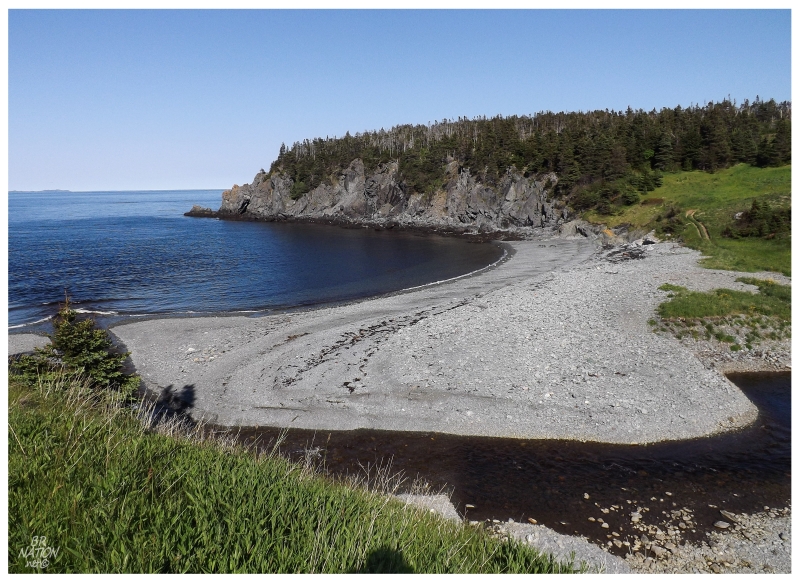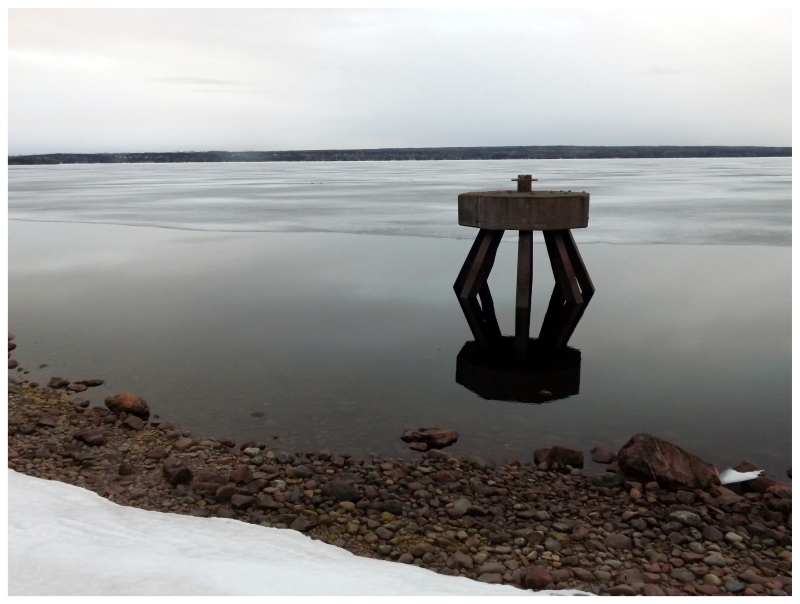
The next day was dedicated to what may be the biggest tourist attraction here in Southern Labrador: the restored fishing village of Battle Harbour. Driving down to Mary's Harbour, we easily found the ferry wharf and our docked longliner surrounded by out-of-towners milling about. Leaving Isy outside with the dog, I went inside the ticket office and happily learned that since it was something called Battle Harbour Days and we were skipping the guided tours, that it was only $30 each instead of the $115 each I had booked. $170 refund in hand, we were quickly off on our hour-long boat ride, keeping various islands to our south and the open Labrador Sea to our north. |
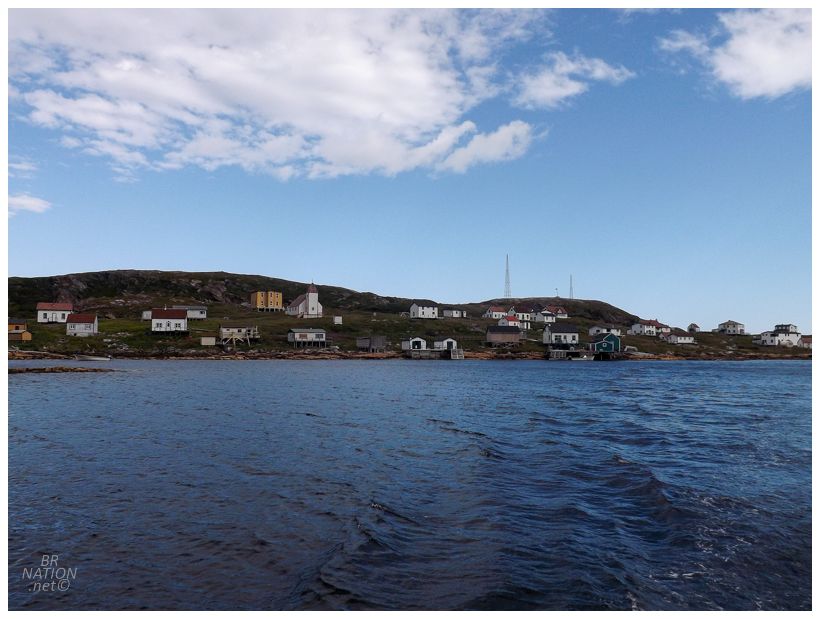
A restored fishing village reached by an hour-long boat ride seems right up my alley, but the aforementioned cost - and the remoteness - combined to make it a decade of Newfoundland living before I got here. I know that their opening and closing dates of June 17th to September 17th is a miniscule tourist window, so I understand why they don't advertise that you can come here on Battle Harbour Days for just $30, but I would have come here a lot earlier if I knew it wouldn't cost $115 for a day trip. It's only that I meekly concluded that Isy would probably enjoy the experience that I ever accepted the $230 cost for both of our tickets. |

There are multiple add-on options here and now knowing about this little $30 hack, suddenly I was thinking about one add-on where you take the normal ferry, then someone brings you across the above tickle to Great Caribou Island, where you're left on your own to explore resettled communities, cemeteries, strange coves, and a Loran radar site. I half thought about selling Isy on skipping Battle Harbour to go look at some flattened sheds on Great Caribou Island, but decided against it. Some other day. |

Foreground: Elizabeth Green Artisan Workshop.
Battle Harbour is not just some random village amongst the hundreds and thousands that once dotted and still dot the coastline of Newfoundland and Labrador. The abundant cod which drew fisherman to Newfoundland, eventually led operations to expand into Labrador. Englishman John Slade of Slade and Company (Poole, Dorset) established a fishing premises here in 1775, trading saltfish and seals, as well as supplying passing ships from Battle Harbour's convenient location as the vessels headed up and down this coast. Bishop Feild, Anglican Bishop to Newfoundland from 1844-1876, visited in 1851 and described Battle Harbour as “probably the oldest, as well as the largest settlement on the Labrador Coast". The year-round population was approximately 200 in 1848. Grenfell would build hospital buildings here by 1893. |
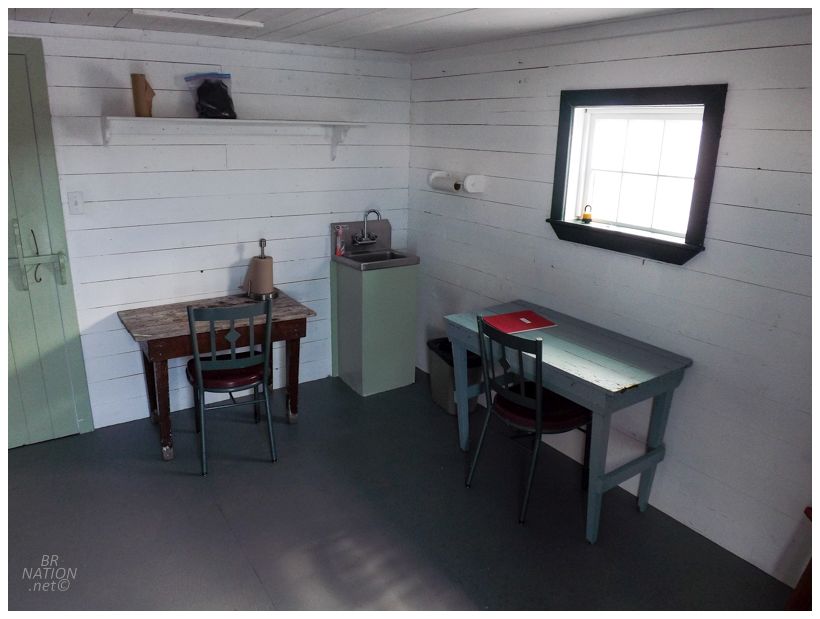
Elizabeth Green Artisan Workshop, interior
Baine, Johnston & Company acquired Battle Harbour's premises in 1871, until they sold it to Earle's Freighting Services Limited in 1955. Battle Harbour suffered a great fire in 1930 which decimated the hospital, school, and various outbuildings. These buildings weren't reconstructed in Battle Harbour afterwards, as the Grenfell Federation instead decided to build them inland at Mary's Harbour. |

Further plight would come to Battle Harbour with Confederation as the prices of salmon and cod dropped. By 1965, with resettlement now an option in Labrador, a lot of families left isolated outports for growth centres. Here in Battle Harbour, 14 different families (59 people) left under the resettlement program, although many kept their houses up and returned to fish in the summer. Earle's continued operating at Battle Harbour into the 1990s, but the 1992 cod moratorium was the final blow. Earle's closed up shop, then donated all of their buildings, some from the 18th century, to the Battle Harbour Historic Trust. Today, a few people live in Battle Harbour during the summer, but there are no year-round residents. |
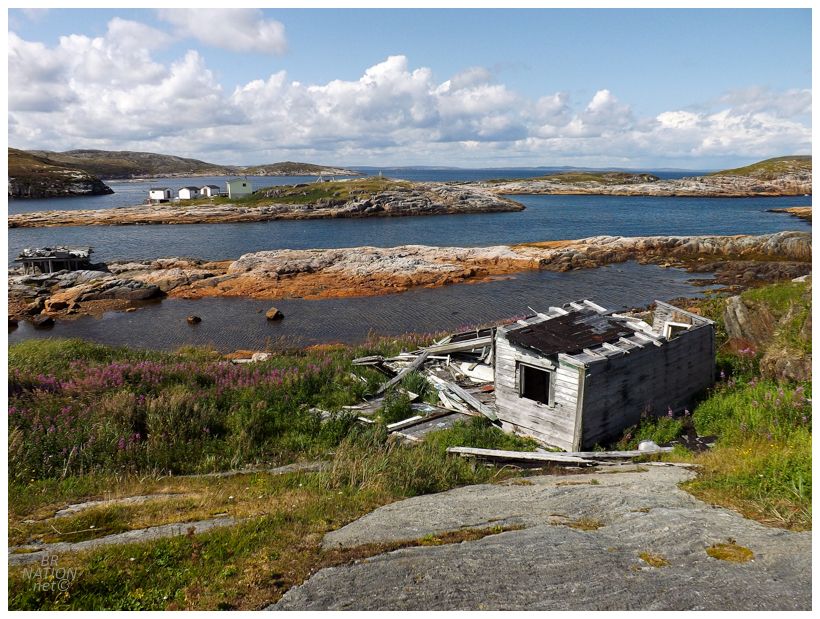
My mainland friend had visited Battle Harbour before and I obviously asked if it was worth seeing. Surprisingly he waved it off, saying that since I've been to every town in Newfoundland, plus dozens of resettled communities, that I've already lived in and seen more authentic places. Except that Isy and I were already discussing if we could somehow stay out here after only 30 minutes. I had to disagree with my friend. This was like one of the authentic, historic coastal communities of Newfoundland, but out on some isolated rock in the Labrador Sea. Plus it didn't have so much of that historical village feeling that you get from places where they randomly move an old schoolhouse, build a faux church and have period actors. Although after thinking about it, we quickly came to the realization that we didn't have the dog's meds anyway, so we couldn't actually stay out here. (I just checked and the dog-friendly cottage is $580/night. Maybe we weren't THAT committed to staying out here, lol.) |
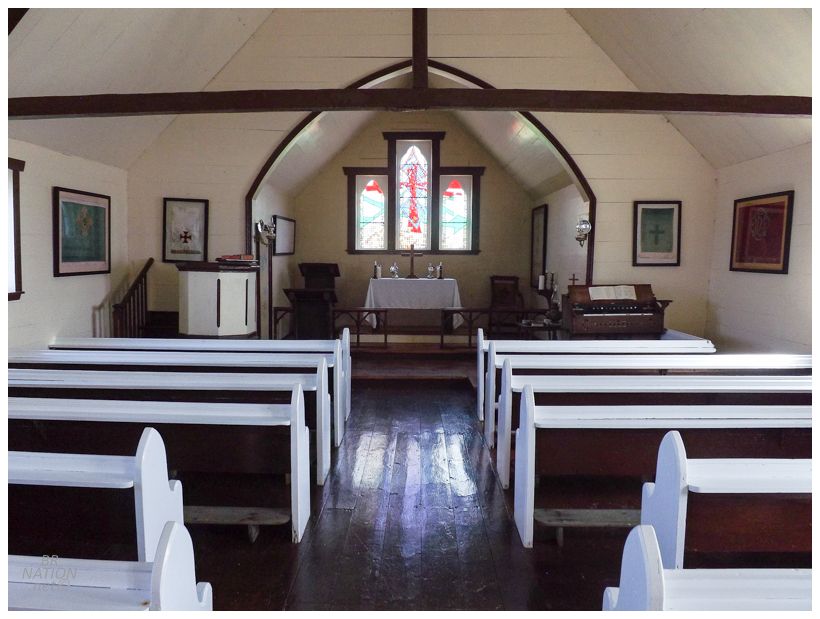
Wandering into the church, this building was designed by William Grey and built between 1852 and 1857. William Grey was made the resident Diocesan architect by Bishop Feild after Feild was displeased the earlier designer of churches, one James Purcell. Grey ended up being a breath of fresh air, bringing remarkable, refreshing, and insightful designs to Newfoundland through churches in Hermitage (Bay d'Espoir), Lower Burgeo, St. John's, Forteau, Portugal Cove, and here in Battle Harbour. Unfortunately, only William Grey's Battle Harbour work still stands today. An article from professors Shane O'Dea and Peter Coffman has some fantastic photos of Grey's work. |
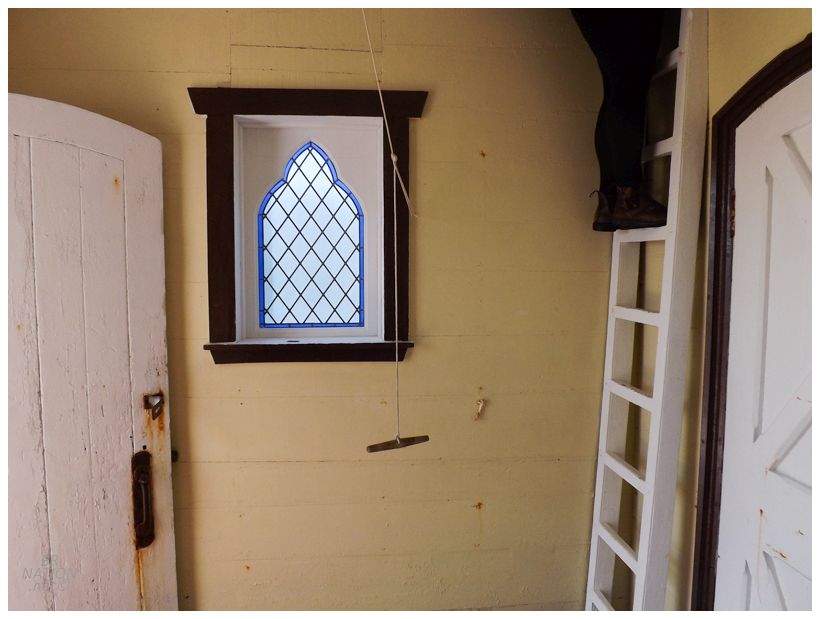
Checking out the tower. |

Battle Harbour's Battle Island isn't a large island, only measuring 1km (0.6mi) by 0.5km at its furthest points. A 2.5 km (1.55mi) trail hooks around the back of the island and connects a few sites of interest. One of those sites is the old cemetery, where there are headstones so old that they came from Poole England via Slade & Co. |


In addition to the Old Anglican Cemetery, only a few minutes later the trail led us through the New Anglican Cemetery. That famous photo of the little kid with the giant cod was taken in Battle Harbour and his name was Victor Croucher. He's buried in this cemetery. |
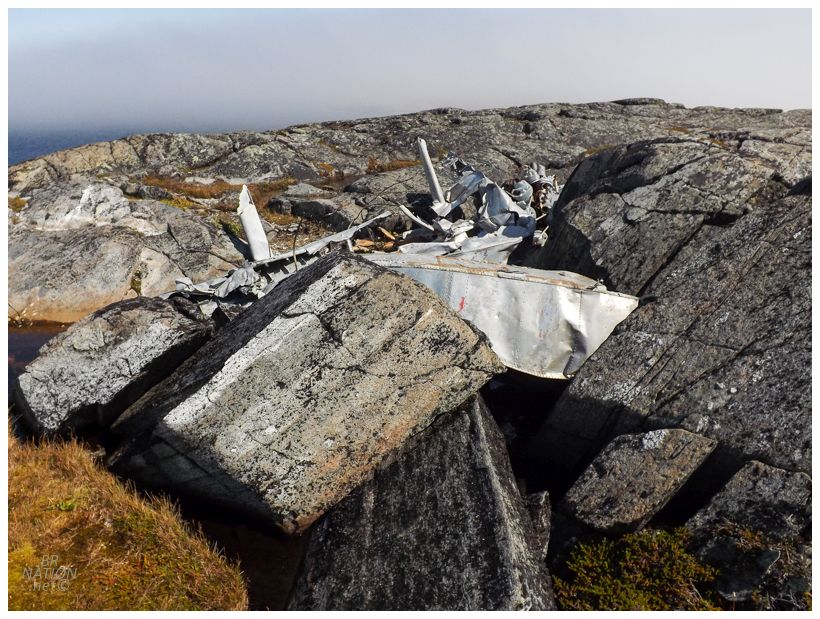
After walking out to a point of land with a nice bench but a good bit of wind, we returned and headed south towards the plane crash site. On July 31st, 1976, a de Havilland DHC-2 Beaver bush plane left from Goose Bay with a pilot and two government officials. The officials were coming to Battle Harbour in order to check and verify various scales in use here. |
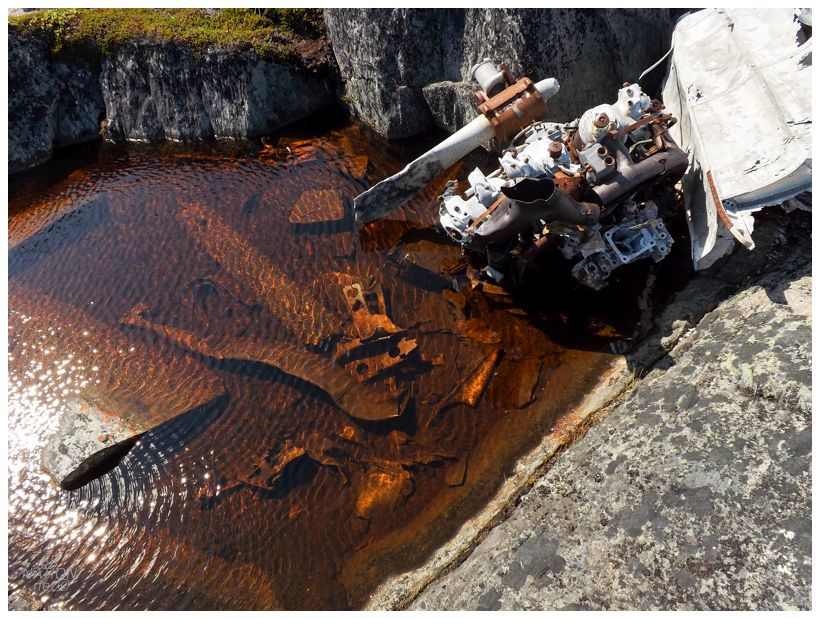
After leaving in foggy conditions, the pilot brought the plane around the back of Battle Island where he clipped one of this wings on a rock escarpment, driving the plane into the ground. All three occupants died and it wasn't until the next day that any of the residents could hike out over the hill to see what had happened. It's pretty incredible to think most of the metal in these intact plane pictures lay in a twisted heap here. |
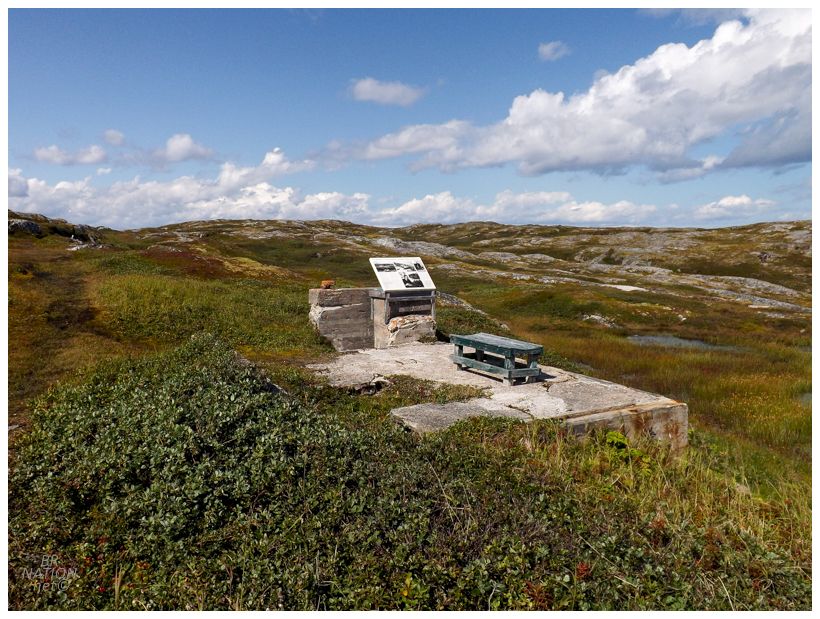
For a 2.5km hike, Battle Island was really packing in the points of interest. Next up was the location of the Battle Harbour Marconi Wireless Station. This was one of nine stations along the Labrador coast, allowing residents, sailors, and those responding to medical emergencies to communicate with the outside world. It's also at this wireless station that polar explorer Robert E. Peary landed and spent a few days in 1909, relaying his tale of reaching the North Pole down to the States and the senior copy editor of the New York Times. (Peary's claim to have been the first to reach the North Pole has since come under scrutiny.) |
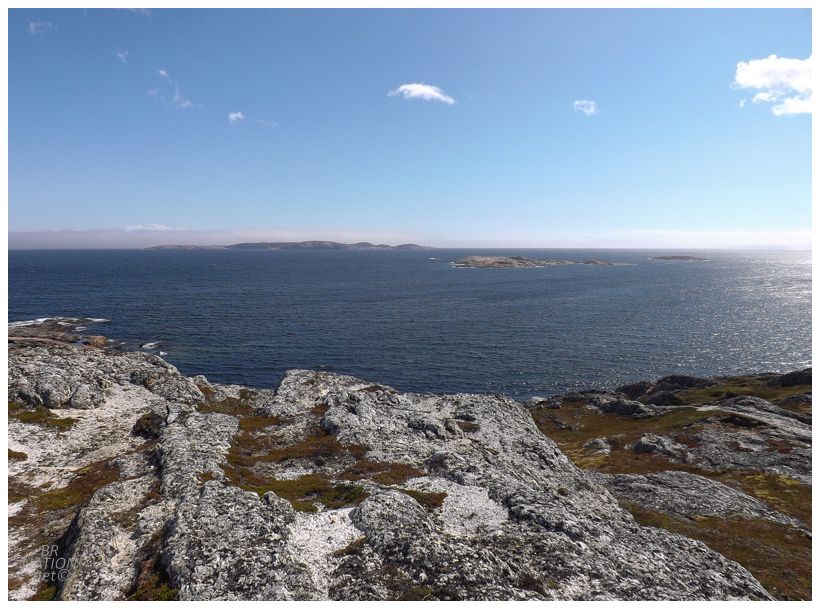
Double Island, far off in the distance
Lastly, I was very excited by the possibility of seeing the Double Island Lighthouse from up here. Battle Island had barely held back the fog for the majority of our hike, but just as we reached this southern peak, the fog broke even further and retreated briefly so off in the distance I could see something. |

The Double Island Lighthouse! No need to go into detail for this one since it doesn't count until I find myself on Double Island, but this is such a classic example of how hard it would be to get every last Newfoundland & Labrador lighthouse. I actually emailed the local tour company and they said they do do a boat ride which gets you close, but that there's no way to land on the island. I clearly need to find me a fisherman in Mary's Harbour that's fine with letting me jump off onto some Double Island rock slab. |


It was hard to ask for a better day weather-wise. It was even late enough in the season, plus slightly windy, that the bugs weren't a bother (which is a big plus in Labrador - the only place I've ever had an eye swollen half-shut from savage blackflies). |

The last thing to do was check out the fishing premises buildings, which were open and filled with artifacts and informational boards. |
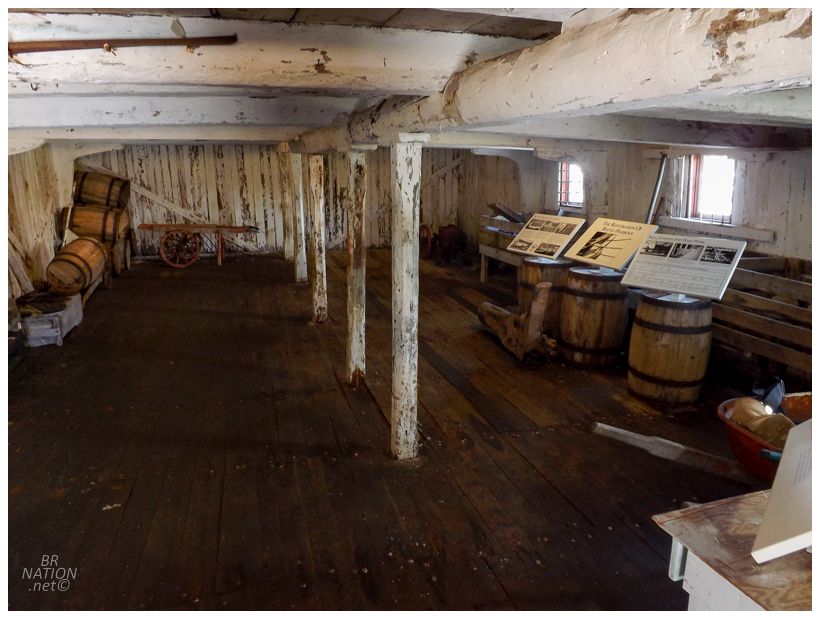
Bottom floor of the oldest building at Battle Harbour, built in 1775.

Of course this would regularly be part of the guided tour, but I was happy trying to keep up with reading all of the signage myself. One of the things I was most impressed with was a giant map of Labrador showing hundreds of old communities, which was remarkable when thinking about how the coast of Labrador only has around 25 communities today. |
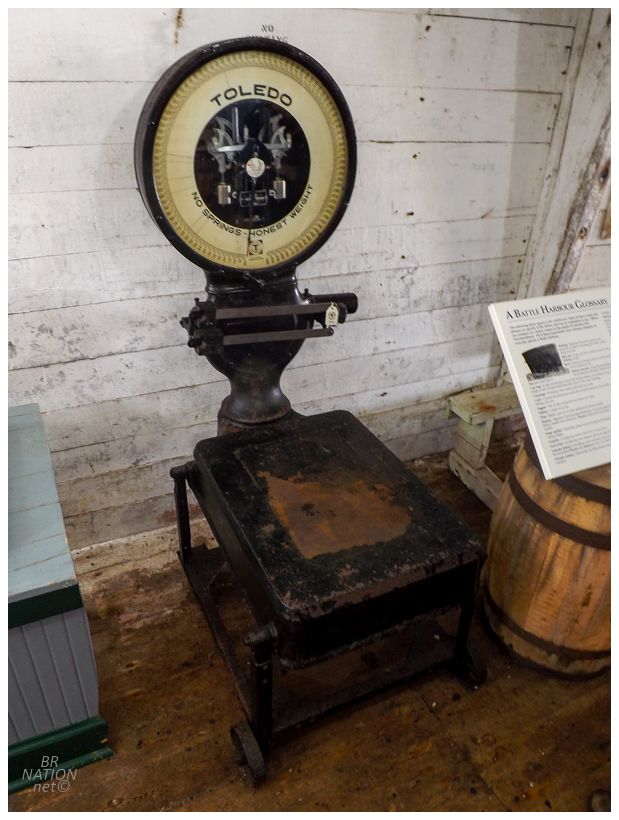
The most ridiculous moment of the day would come compliments of this Toledo Scale and my thoughts that it would be a good idea to weigh the dog. Now Isy would usually be the voice of reason here so I half thought she would stop me, but she'd later admit that she wasn't thinking. So I grabbed up the dog and put him on the scale platform, but the base of the scale isn't meant for living things. It shook and swayed all over and the dog looked like a scab tightrope walker, unsure and shifting his mass everywhere on his precarious perch. Both of us frantic and realizing where we went wrong, I scooped him up in seconds and in the end, we never figured out how much salt fish we could trade him for. |

The dog doesn't like the boat - or Toledo Scales as we'd learn - so with that stress he was ready to lay down in the historic buildings. |
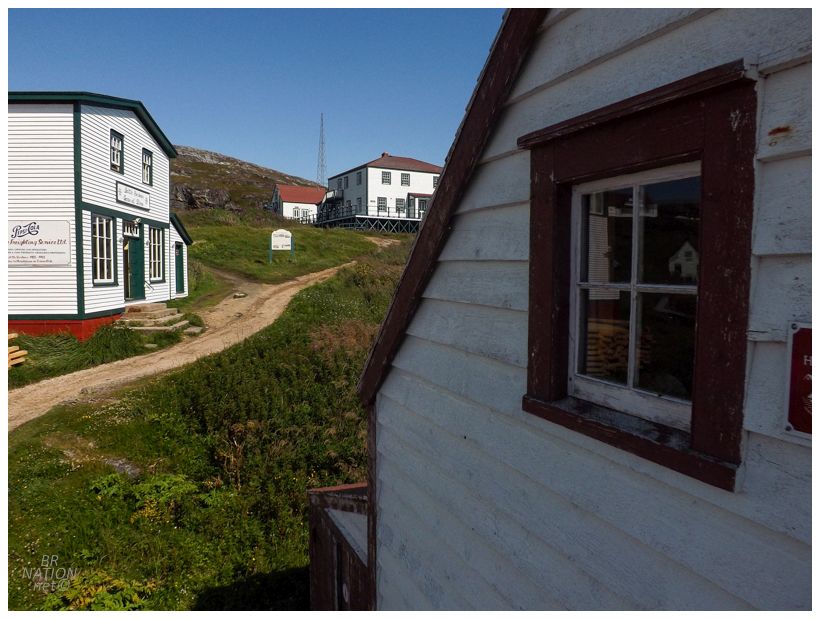

In addition to the salt fish warehouse, merchant building, and salt storage building that stored up to 1.2 million pounds of salt; there was also the general store that's been lovingly restored. There's also a loft upstairs with food and drinks, but we couldn't partake in any adult beverages on the little exterior catwalk since we had the dog. Oh well. |

Our four hours on Battle Island were just about over and hoping back onto the Trinity Pride tour boat, Isy and some guy decked out in Prince Albert Raiders gear had a chat, while Kingsley continue to grab attention from everyone. Back on the mainland, we stocked up on provisions at Simms Cash & Carry in Mary's Harbour, before heading south happy with being able to make camp a bit earlier tonight and not right at day's end. Except that we really struck out finding stealth campsites south of Mary's Harbour, until finally, fantastically, we came to someone's cleared lot right on this lake out in the middle of nowhere along the Trans-Labrador Highway. I couldn't believe how sweet this spot was, proceeded to crack a beer, and began taking stuff out of the car. That is until Isy said what I knew was true. It was too windy. Our damn windsail of a tent, this was the last straw. We had to leave this spot too and I had enough of missing out on great experiences because of its inability to stand tall in NL winds. Anyway, we kept going south until we eventually ended up at a sheltered Pinware River Provincial Park campsite. |
